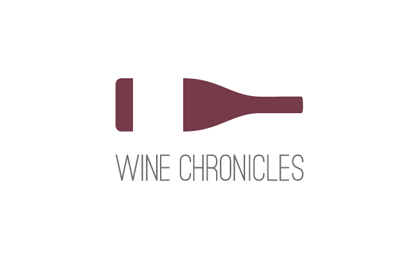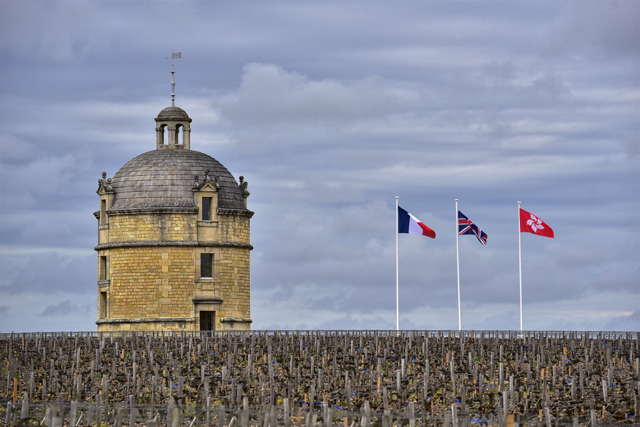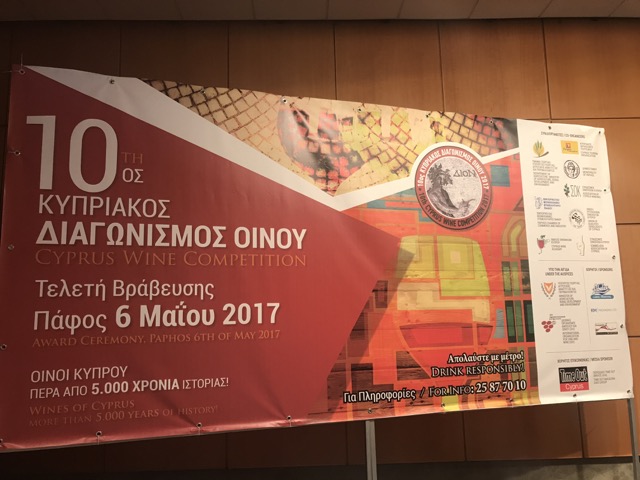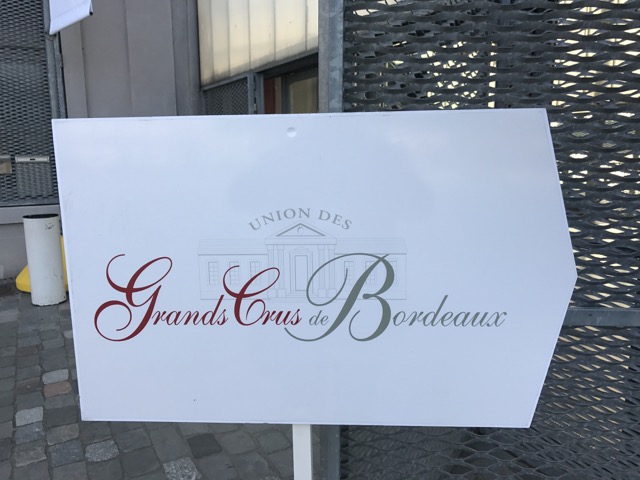Environmentally friendly: new Bordeaux initiative
Posted on May 24, 2017
Press release – 23 May
Lussac Saint-Emilion, Puisseguin Saint-Emilion, Saint-Emilion and Saint-Emilion Grand Cru winegrowers commit to an “environmentally friendly” approach
At their Annual General Meeting on Tuesday 16th May 2017, the winegrowers of the Saint-Emilion Wine Council voted in favour of adopting environmentally friendly cultivation practices that will soon be added to the requirements of their appellations.
Saint-Emilion has often been a leader in issues related to the environment. Many individual or collective initiatives have been taken that improve winegrowing practices and reduce environmental impacts : agricultural equipment sharing collectives, the Libourne area Defence Group against Harmful Organisms, the TULIPE biodiversity initiative, environmental management systems, the EU’s Life+ funding programme, the BioDiVine biodiversity management project, etc.In line with these initiatives and in an effort to go further, the Saint-Emilion Wine Council embarked on discussions with all the winegrowers in the Lussac Saint-Emilion, Puisseguin Saint-Emilion, Saint- Emilion and Saint-Emilion Grand Cru appellation areas. An Environmental Commission worked on this project for more than a year. A wide-ranging survey of all properties was carried out to characterise the environmental cultivation practices employed, and more than 400 winegrowers (54%) responded. Their answers revealed that they cared about the subject and were really conscious of the issues. The many reasons cited varied from meeting customers’ expectations to being worthy of a thousand-year-old wine-producing area and its listing as a UNESCO heritage site, while sometimes the views given opposed each other.
Based on these findings, the Environmental Commission drafted a series of proposals that were approved by the Board. The President of the Saint-Emilion Wine Council, Jean-François Galhaud saw to it that these measures were put to the vote during the Annual General Meeting on 16th May 2017, which was attended by a record number of members. Almost 350 votes were registered.
The environmental cultivation measures adopted by a large majority are the following:
– Blanket use of herbicides to be forbidden
– Use of herbicides on plot boundaries to be forbidden
– Estate’s treatment frequency indices to be measured and identified
– Vineyard and winery effluent treatment obligatory
– Commitment from every winegrower to work to obtain officially recognised environmental or organic certification, either individually or collectively, to be put into action before the 2019 harvest.The last ambitious, innovative measure bears witness to the Council’s winegrowers’ ambition to embrace the future collectively and to make all the efforts of recent years bear palpable fruit. The Wine Council will support winegrowers in applying the environmental measures at every estate.
Press contacts Saint-Emilion Wine Council – Tel. +33 557 555 050 Franck Binard, Director of the Saint-Emilion Wine Council – franck.binard@vins-saint-emilion.com Philippe Raymond, Technical Director – philippe.raymond@vins-saint-emilion.com €
Bordeaux 2016: Top of the Pops
Posted on May 13, 2017

Top of the pops
By Panos Kakaviatos for wine-chronicles.com
13 May 2017
In a blog post for the American company Total Wine, I submitted those barrel samples that left me with what the French call a coup de coeur: wines that go straight to the heart. Like the Grand Hotel photo (thanks, Miguel Lecuona), my Top of the Pops includes the grandest of wines, regardless of price. But also some made the cut, because of their relatively competitive prices. As we are expecting many top wines to be issued next week, I think it timely to share these impressions on my blog.
Now that I solved a glitch in WordPress, I have recovered the color function! So, as before, wines I like in particular in bold. Those with red and bold, even more. And nirvana wines? In red and bold and underline.
The first growths
A tough call, but Château Latour comes first among the firsts. Fellow blogger and photographer Miguel Lecuona dubbed it “a sense of momentum taking you forward” and that sums up the wine’s suave and subtle power. Above all, you get a sense of finely grained tannin on the palate, which displayed distinct notes of crushed tobacco, graphite and a mix of cool blueberry and ripe blackberry fruit. Everything seems in place. You get sumptuousness, too, from the 7% ripe and fresh Merlot that was particularly successful, explained estate technical director Hélène Génin. I could not get enough of the urbane class of this wine, with layers of pleasing palate texture and a distinct cigar box finish, displaying superb raciness and a very long finish. Bravo! 98-100 Read More
Cyprus wines
Posted on May 11, 2017

A work in progress
By Panos Kakaviatos for wine-chronicles.com
11 May 2017
The fresh sea and air. The music. Fantastic food and kind people. Pafos, Cyprus? “Paradise,” quipped our lovely and engaging tour guide Mary Patrouklou. I joined several other participants on a tour of Cypriot vineyards earlier this month, to learn about their ancient history and to understand the current wine scene.
Our tour, including several stops in charming villages as well as wineries, built up to an award winning ceremony in the 10th annual Cyprus Wine Competition. Never heard of it? I hadn’t either. It would have been better for organizers to have done more publicity, including an English-language website.
But more on that later. Judges included dear friend and Hellenic wine specialist Demetri Walters MW, with whom I had judged two years before at a wine competition in Thessalonika, and Bordeaux-based Marie-Laurence Porte, whom I will see next month at Bordeaux’s Vinexpo.
No wines that we tried were transcendental. Some were very good. Others not so. What mattered most were the enthusiastic and committed Cypriot winemakers who, in just the past decade or so, have raised the bar on Cypriot wine quality, emphasizing indigenous grapes.
Not that long ago, one saw many more vineyards on the island, mainly used to make cheap quaffers sold, primarily, to the Soviet Union. Or at least bartered in exchange for raw materials, as Angelos Tsangarides of the Tsangarides Winery explained.
When the Soviet Union collapsed, the Cypriot government paid wineries to either uproot vines or to make smaller wineries, committed to quality. Tsangarides chose the latter path. Committed to organic winemaking, he points out how the generation of his parents had focused on volume, but not so earlier generations. “You had to go back to our grandparents, who followed even back then the tenets of biodynamic and organic winemaking,” he said. Read More
Médoc 2016 from barrel
Posted on May 10, 2017

Mags of Château Potensac and Château de Lamarque, among other good deals!
Bordeaux 2016 barrel tasting notes
10 May 2017
By Panos Kakaviatos for wine-chronicles.com
As seen already, the northern Médoc did very well especially from barrel. Budget conscious buyers will find cru bourgeois level wines with high quality. Including for example Château Potensac, which was released recently for about €20 a bottle. In my opinion a great deal! This section includes appellations to the south, such as Moulis (some more expensive than others), including classified growths like Château La Lagune, as well as pricier, non-classified growths like Château Sociando Mallet: both highly recommended.
Among the very best: Château La Lagune, Château Potensac, Château Sociando Mallet
Among best bargains: Château de Lamarque, Château Clarke, Château Brillette
Wines in bold, I liked in particular. When red and bold, even more. And when underlined, too, a kind of barrel tasting nirvana – for both price point and category. Read More
St Emilion 2000, 15 years on
Posted on May 2, 2017

15 years in bottle: How do the “big boys” compare?
By Panos Kakaviatos for wine-chronicles.com
2 May 2017
Since January this year, I had wanted to organize a blind tasting of Saint Emilion 2000, to compare the top classified growths against “lesser” pedigrees.
It would be a follow up to a blind tasting that I had organized in Strasbourg back in June 2005, to compare the then, virtually nouveaux nés 2000s. So I contacted my wine tasting pal Kevin Shin, in Washington D.C., who liked the idea, to help out with a venue and to get a group together, for what are now adolescent Saint Emilions: still youthful, but at least approaching early drinking windows.
Each participant brought wines, including Ausone and Cheval Blanc. I brought, for example, the two Beau Séjours, Angélus, Figeac, Canon La Gaffelière, Bélair, one of two Clos Fourtets.
Many thanks to the Association de Grands Crus Classés de Saint-Emilion for donating several bottles on behalf of their members to take part in the blind tasting, that included, as previously mentioned, many “heavy weights,” including as well Pavie, Pavie-Macquin, Troplong Mondot, Valandraud and others.
And thanks, too, to the owner of Château Corbin-Michotte, a wine that should not have been demoted in the last assessment of the Saint Emilion, in my opinion. And the tasting showed that it was a well esteemed wine. Read More
 Wine Chronicles
Wine Chronicles


Recent Comments